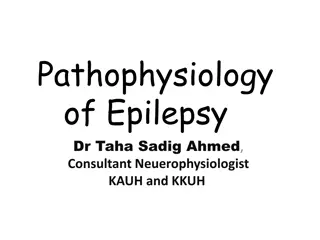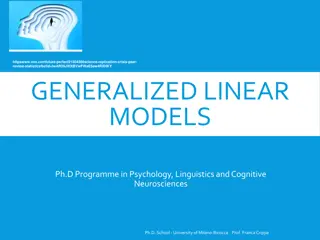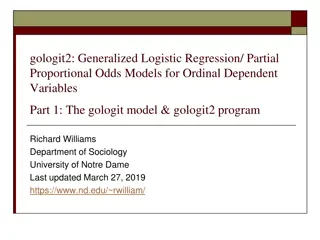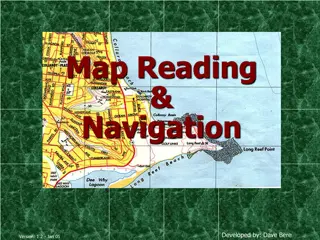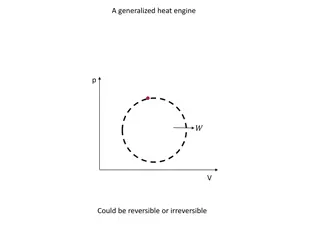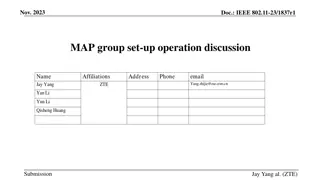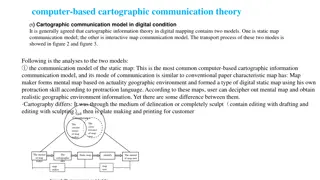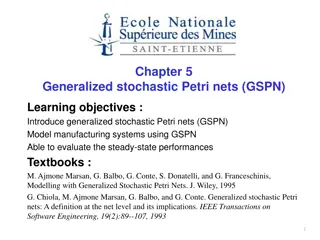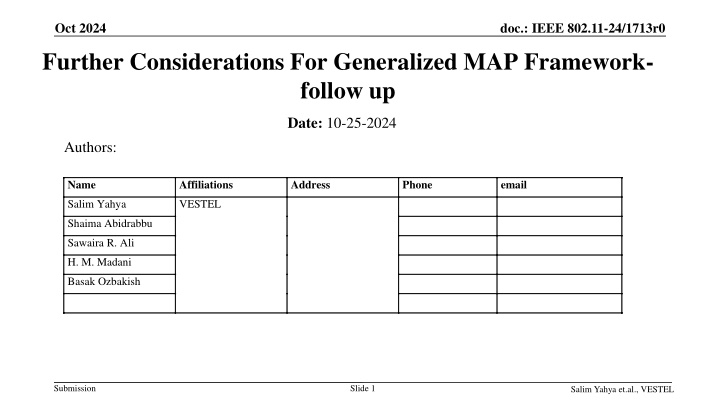
Multi-AP Coordination in IEEE 802.11bn: Insights and Considerations
Explore the generalized framework for multi-AP coordination in IEEE 802.11bn, focusing on backhaul availability, user-related information, system requirements, and scheme selection. Understand the advantages of MAP coordination including enhanced network efficiency, improved coverage, reduced latency, and more. Dive into key considerations such as backhaul capability, user information, system requirements, and scheme availability to optimize multi-AP transmission.
Download Presentation

Please find below an Image/Link to download the presentation.
The content on the website is provided AS IS for your information and personal use only. It may not be sold, licensed, or shared on other websites without obtaining consent from the author. If you encounter any issues during the download, it is possible that the publisher has removed the file from their server.
You are allowed to download the files provided on this website for personal or commercial use, subject to the condition that they are used lawfully. All files are the property of their respective owners.
The content on the website is provided AS IS for your information and personal use only. It may not be sold, licensed, or shared on other websites without obtaining consent from the author.
E N D
Presentation Transcript
Oct 2024 doc.: IEEE 802.11-24/1713r0 Further Considerations For Generalized MAP Framework- follow up Date: 10-25-2024 Authors: Name Affiliations Address Phone email Salim Yahya VESTEL Shaima Abidrabbu Sawaira R. Ali H. M. Madani Basak Ozbakish Submission Slide 1 Salim Yahya et.al., VESTEL
Oct 2024 doc.: IEEE 802.11-24/1713r0 Abstract In this contribution, we highlight our thoughts regarding the generalized framework of multi-AP coordination for 802.11bn considering several parameters such as backhaul availability, user related information, system requirements, scheme selection availability, and others. Submission Slide 2 Salim Yahya et.al., VESTEL
Oct 2024 doc.: IEEE 802.11-24/1713r0 Introduction Multi-AP (MAP) Coordination is one of the key features considered for IEEE 802.11bn. In [1], MAP coordination has a lot of advantages such as: 1. Enhanced Network Efficiency. 2. Improved Coverage and Performance. 3. Reduced Latency. 4. Energy Savings, Scalability, Reliability and Robustness, and so on. Different forms of MAP coordination have been discussed: Coordinated TWT Coordinated TDMA Coordinated Spatial Reuse Coordinated Beamforming Joint Transmission Coordinated Channel Usage Submission Slide 3 Salim Yahya et.al., VESTEL
Oct 2024 doc.: IEEE 802.11-24/1713r0 Recap (1) Important considerations for multi-AP coordination have been discussed in [1] such as 1. 2. 3. 4. Backhaul capability User related information (link quality indication) System requirements (latency) Scheme selection availability Submission Slide 4 Salim Yahya et.al., VESTEL
Oct 2024 doc.: IEEE 802.11-24/1713r0 Proposed Approach Backhaul Availability Users Related information Multi-AP transmission based on selected coordination scheme Group formation of MAP Termination/ Modification Multiple APs System Requirements Scheme Selection Applicability Others Proposed procedure MAP mode specific procedure Proposed procedure Submission Slide 5 Salim Yahya et.al., VESTEL
Oct 2024 doc.: IEEE 802.11-24/1713r0 BackhaulAvailability Includes: Latency Bandwidth Synchronization among access point Submission Slide 6 Salim Yahya et.al., VESTEL
Oct 2024 doc.: IEEE 802.11-24/1713r0 User Related Information Requirements: Latency Reliability Throughput Jitter Link quality User Capabilities Submission Slide 7 Salim Yahya et.al., VESTEL
Oct 2024 doc.: IEEE 802.11-24/1713r0 System Requirements Include: Load Balancing Energy Efficiency Spectral Efficiency Backhaul Optimization Submission Slide 8 Salim Yahya et.al., VESTEL
Oct 2024 doc.: IEEE 802.11-24/1713r0 Scheme Selection Applicability Includes: Coordinated TWT Coordinated TDMA Coordinated Spatial Reuse Coordinated Beamforming Joint Transmission Coordinated Channel Usage Submission Slide 9 Salim Yahya et.al., VESTEL
Oct 2024 doc.: IEEE 802.11-24/1713r0 Others Include: MLO Multilink Device-Enabled Networking Tradeoff between performance and overhead Submission Slide 10 Salim Yahya et.al., VESTEL
Oct 2024 doc.: IEEE 802.11-24/1713r0 Summary In this contribution, we present our approach for multi-AP group formation in generalized framework of MAP coordination by considering several parameters such as user requirements, backhaul, scheme selection applicability, system requirements and others. Submission Slide 11 Salim Yahya et.al., VESTEL
Oct 2024 doc.: IEEE 802.11-24/1713r0 References [1]: Further Considerations For Generalized MAP Framework , IEEE 802.11-24/1646r0. [2]: Requirements and functionalities for multi-AP framework , IEEE 802.11-24/0511r1 Submission Slide 12 Salim Yahya et.al., VESTEL



